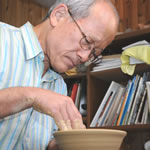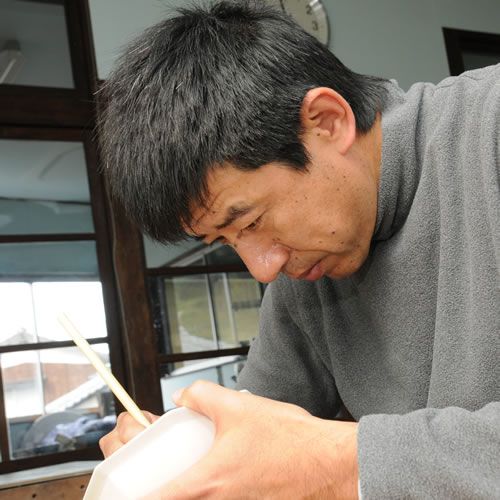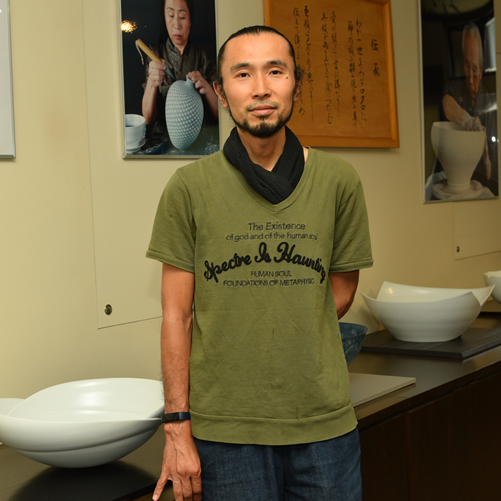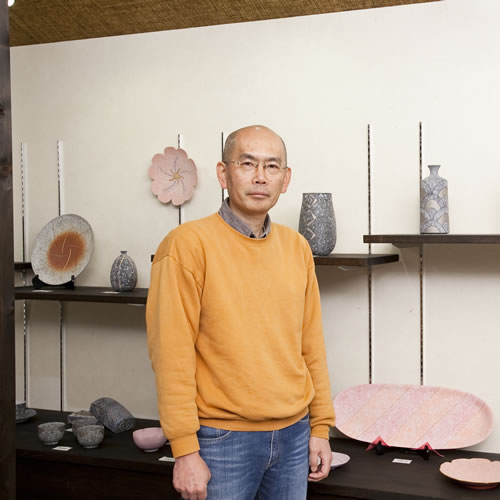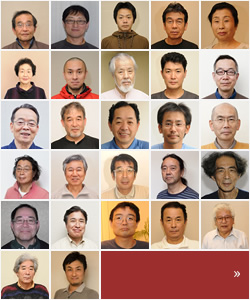Takeo Ware
400 years history from the Early Karatsu and very quiet pattern
Takeo, a city famous for hot springs and the ceramic ware, has over 90 kilns that have passed their tradition onto generations.
During the Japanese invasion of Korea from 1592 to 1598, Korean ceramic artists were accompanied by the feudal lord of Takeo to Japan, which marked the beginning of Takeo Ware. This superb ware with 400 years of tradition is known as the old ceramic called “Kotakeo”, not only in Japan but in South-east Asia. People like them arond the world these days. Thanks to the ceramic masters heritage, Takeo Ware attained a glorious reputation. Since then, ceramic artists have inherited the techniques and have also polished unique techniques; dish-ware and tea utensils reveal their originality as artwork as well as practical pieces./p>
FUKUDA, Tadao who is an owner of the Mumyo Kiln signifies the Japanese aesthetics, “wabi” and “sabi” through his ceramics.
MATSUO, Jun throws salt into the kiln that's translated into faint color by evaporation. That's his original salt glaze decoration.
Takeo Ware is generally classified into either brownish earthen-ware or white porcelain. There are a variety of styles based on the techniques: iron painting, green glaze, iron glaze, brush mark, inlay, beating and the other, blue and white painting.
The Earthen-ware fired in Takeo-shi, called “Karatsu-style” is simple, but some have color painting and splendid patterns. And the artists also dedicate themselves to making their work not just artistic but also practical for the modern lifestyle.
As Takeo Ware has kept and developed their tradition for centuries, it values tones of simplicity, warmness, and tranquility. That is why Takeo artwork never stops attracting fans.

